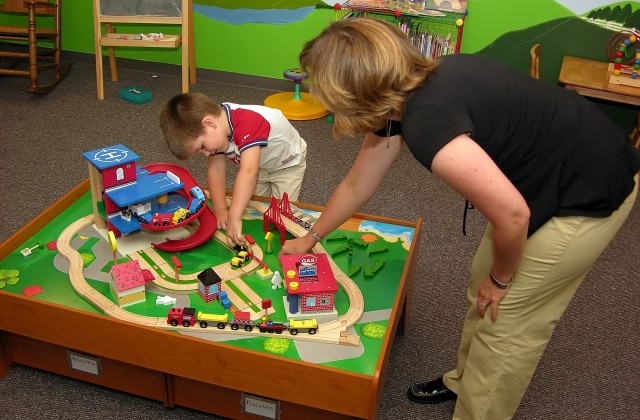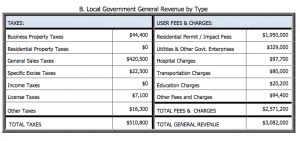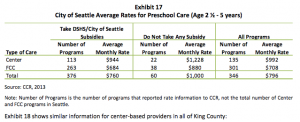The 100 Percent Rule: A Year of Preschool for 800 Kids
In my last post about the importance of the 100 percent rule staying in small-lot legislation I talked about the impact of creating 250 new homes, including jobs and tax revenue. Councilmember Tim Burgess has suggested that this number of homes is not “meaningful.” But based on methodology developed by the National Association of Home Builders, the construction of those 250 new homes would create as much as $70 million in public benefits, including, over $7 million in taxes and fees. The NAHB study looks at 100 new homes, but we can multiply these benefits by 2.5. The City always needs funding for important public benefits, and lately they’ve been taking a look at funding universal preschool in the city.
Let’s look at where the money comes from first, then how much public benefit, including preschool, it can buy.
The estimated one-year metro area impacts of building 100 single-family homes in Seattle include
$28.3 million in local income, $4.3 million in taxes and other revenue for local governments, and 317 local jobs.
These are local impacts, representing income and jobs for residents of the Seattle Metropolitan Division and taxes (and other sources of revenue, including permit fees) for all local jurisdictions within this metro area. They are also one-year impacts that include both the direct and indirect impact of the construction activity itself, and the impact of local residents who earn money from the construction activity spending part of it within the local area. Local jobs are measured in full time equivalents—i.e., one reported job represents enough work to keep one worker employed full-time for a year, based on average hours worked per week by full-time employees in the industry.
Here’s the additional tax revenue and fees that would come in for 100 homes.
Take that figure in chart B above, $3,082,000, and multiply it by a factor of 2.5 and you get $7,705,000 in fees and taxes. All 250 homes wouldn’t be built at the same time, but that’s a lot of money.
In a study commissioned by the Seattle City Council the costs of preschool was, on average, about $796 per month.
Now you just have to do that math to find out that a year of preschool would cost about $9,552 and $7.7 million dollars would cover that annual cost for about 800 children. The Council found that
Several long-term evaluations show that children who attend high-quality preschools are better prepared to enter kindergarten and learn. They have better high-school and college graduation rates. They have much lower levels of criminal behavior. They are healthier. And, they do better economically as adults.
The one time economic benefit from the building of 250 new homes is significant, but these numbers don’t even take into consideration the ongoing benefits to the City and the community from those new houses.
The NAHB study finds that the additional, annually recurring impacts of building 100 single-family homes in Seattle include,
$4.0 million in local income, $1.1 million in taxes and other revenue for local governments, and 50 local jobs.
These are ongoing, annual local impacts that result from the new homes being occupied and the occupants paying taxes and otherwise participating in the local economy year after year. The ongoing impacts also include the effect of increased property taxes, based on the difference between the value of raw land and the value of a completed housing unit on a finished lot, assuming that raw land would be taxed at the same rate as the completed housing unit.
Now does the money generated from new home construction become available for preschool? Of course not. The City’s budget is complicated and funding for preschool will require a much bigger budget and a sustainable way of generating revenue. But why would the City turn any new revenue away at a time when it is considering a big investment in its children? Some might question these numbers and argue the benefits are far fewer. But even if the methodology is overestimating revenue by a factor of 10, that is still the equivalent of 80 kids getting preschool for a year. That seems pretty meaningful.




